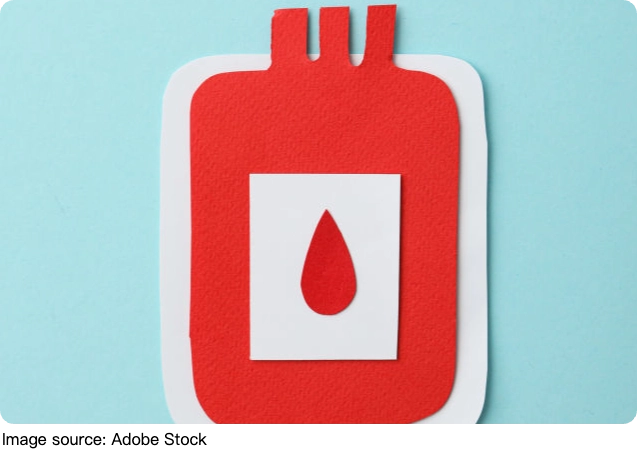Blood Clot: Too Quickly?

Blood clotting or coagulation is a vital process that prevents excessive bleeding when blood vessels are injured.
However, when clotting occurs too rapidly or excessively, it can lead to dangerous blockages in blood vessels, causing conditions such as deep vein thrombosis (DVT) or pulmonary embolism.
Genetic Predispositions: The Role of Inherited Clotting Disorders
One of the key factors contributing to rapid blood clotting is the presence of inherited genetic mutations that disrupt the normal coagulation process. The Factor V Leiden mutation is the most prevalent of these, found in a notable percentage of the population.
It interferes with the ability of activated protein C to deactivate Factor V, leading to prolonged clot formation. This significantly raises the risk of developing abnormal clots—by up to ten times in those with one copy of the mutation, and even more in individuals with two copies.
Another prevalent genetic cause is the Prothrombin G20210A mutation, which elevates prothrombin levels, enhancing clot formation. Carriers have a two- to three-fold increased risk of thrombosis. When combined with Factor V Leiden, the risk multiplies, underscoring the complex interplay of genetic factors in hypercoagulability.
Acquired Conditions and Risk Factors Amplifying Clot Formation
Beyond genetics, several acquired conditions and lifestyle factors accelerate clotting. Chronic illnesses such as cancer, autoimmune diseases, and severe infections provoke systemic inflammation, which activates clotting pathways. Hormonal influences, notably estrogen from contraceptives or hormone replacement therapy, significantly elevate clot risk, especially in individuals with underlying genetic predispositions.
Surgery, trauma, prolonged immobility, and obesity also contribute by promoting venous stasis and endothelial injury—two key elements of Virchow’s triad that predispose to thrombosis. Dr. Angela Brooks, an immunologist, explains, "The convergence of genetic susceptibility and environmental triggers often tips the balance toward pathological clotting."
Molecular Mechanisms: How Clotting Goes Awry
At the molecular level, clotting involves a cascade of enzymatic reactions culminating in fibrin formation, which stabilizes the platelet plug. Mutations like Factor V Leiden prevent normal regulation by activated protein C, while prothrombin mutations increase substrate availability for clot formation.
Additionally, deficiencies in natural anticoagulants such as protein C, protein S, or antithrombin III remove critical inhibitory controls, further accelerating clotting.
Emerging research also implicates inflammatory cytokines and endothelial dysfunction in promoting a hypercoagulable environment, linking immune activation with coagulation abnormalities.
Diagnosing Hypercoagulability: From Genetic Testing to Clinical Assessment
Identifying the cause of rapid clotting requires a comprehensive approach. Genetic testing for Factor V Leiden, prothrombin mutations, and other thrombophilias helps stratify risk. Blood tests measuring levels of natural anticoagulants, D-dimer, and clotting times provide functional insights. Imaging studies detect existing clots, while detailed patient history uncovers potential triggers.

Management Strategies: Balancing Clot Prevention and Safety
Treatment focuses on anti-coagulation therapy to inhibit further clot formation, using agents like warfarin. For individuals with genetic predispositions, long-term or lifelong anti-coagulation may be necessary, especially if compounded by additional risk factors. Lifestyle modifications, including weight management and cautious use of hormonal therapies, play supportive roles.
Blood's ability to clot too quickly stems from a multifaceted interplay of inherited mutations, acquired conditions, and environmental factors. Understanding these mechanisms is crucial for effective prevention and treatment. As Dr. Michael Streiff succinctly states, "Decoding the genetic and molecular underpinnings of hypercoagulability transforms patient care, turning potential catastrophes into manageable conditions."
-
 Fiji’s Hidden ThrillsBeyond white sands lie volcanic hikes, sacred temples, and tribal ceremonies—ready for Fiji’s true adventure?
Fiji’s Hidden ThrillsBeyond white sands lie volcanic hikes, sacred temples, and tribal ceremonies—ready for Fiji’s true adventure? -
 Budgeting the Azores DreamCan volcanic vistas and ocean wonders fit a tight budget? Discover the Azores’ hidden savings!
Budgeting the Azores DreamCan volcanic vistas and ocean wonders fit a tight budget? Discover the Azores’ hidden savings! -
 Dublin’s Triad of DelightsThree days, castle whispers, ancient secrets—will Dublin’s whirlwind weekend steal your soul?
Dublin’s Triad of DelightsThree days, castle whispers, ancient secrets—will Dublin’s whirlwind weekend steal your soul?